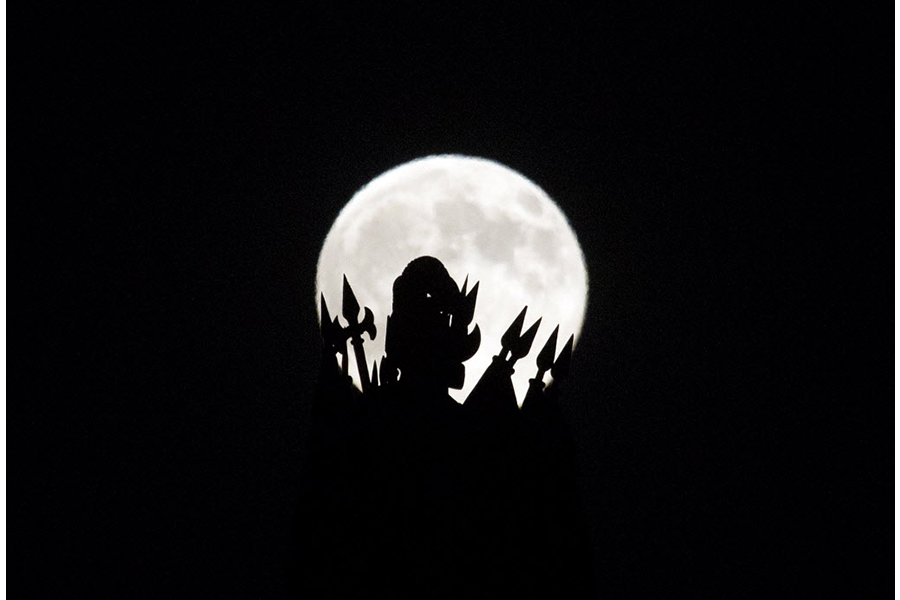Sunday's supermoon eclipse: What is it and how can I watch it?
Loading...
Turn your eyes to the skies Sunday evening for a rare celestial triple-header, the supermoon eclipse.
The supermoon eclipse is a confluence of three events: a full moon; a total lunar eclipse, in which the moon passes into the Earth's shadow; and lunar perigee, when the moon is in the part of its elliptical orbit closest to Earth.
As the lunar show progresses, Earthly viewers will see a large "blood moon" glowing burnt-red in the eastern sky. Where did the morbid nickname come from?
"When it is completely blocked from the sun," explainss NASA's Noah Petro, "the moon will appear a certain hue of red, which is the projection of all the sunsets on the Earth projected onto the face of the moon. It's going to be quite spectacular and very beautiful."
The red hue of the total eclipse is "a very subtle effect," Petro adds, "and if any part of the moon is illuminated in the sun, you can't really see it."
In North America, the total eclipse will start Sunday evening at 10:11 p.m. EDT and last a little over an hour. Unlike a solar eclipse, skywatchers can watch a supermoon lunar eclipse directly, without special glasses or protection.
It's a rare treat: The last supermoon eclipse occurred in 1982, and the next won't occur until 2033. Only five supermoon eclipses graced the skies throughout the entire 20th century.
Why is it so rare?
Three special celestial events must coincide for a supermoon eclipse to occur.
The first is a full moon, which typically occurs about once a month.
The second is a total lunar eclipse, in which the Earth, sun, and moon are perfectly aligned so that the moon passes directly behind the Earth into its shadow. This occurs 0-3 times per year, and always during the full moon.
Third, the moon will be at "perigee," the closest part of its orbit around Earth, which happens about once a month. At perigee, the moon appears larger than usual to Earthly observers – this is the "supermoon" part.
The orbit of the moon is not a perfect circle around the Earth, so there are times when it is closer to or farther from Earth. When it is farthest away, it's known as apogee, and when it is closest, it's known as perigee. On Sunday, the moon will be at its perigee, about 221,753 miles from Earth, or 31,000 miles closer than at apogee. At this distance, the moon will appear about 14 percent larger and 30 percent brighter than an apogee moon, making for an especially vivid night show.
Most of the world will share in this rare event. At least 2 billion people across most of North and South America, Europe, Africa, and parts of West Asia and the eastern Pacific will be able to view the supermoon eclipse, according to NASA.
The moon will begin moving into Earth's shadow around 9:07 p.m. EDT. At 10:11 p.m., it will be entirely within the Earth's shadow, giving it a red tint, where it will stay for about 72 minutes before it begins to leave Earth's shadow. It's a generous window of viewing time for celestial skygazers to enjoy the lunar show.
For those unable to view the supermoon eclipse, several webcasts will also stream live views of the event online. The Slooh Community Observatory, which provides access to remotely operated telescopes, will offer a webcast of the supermoon lunar eclipse accessible through its website.






